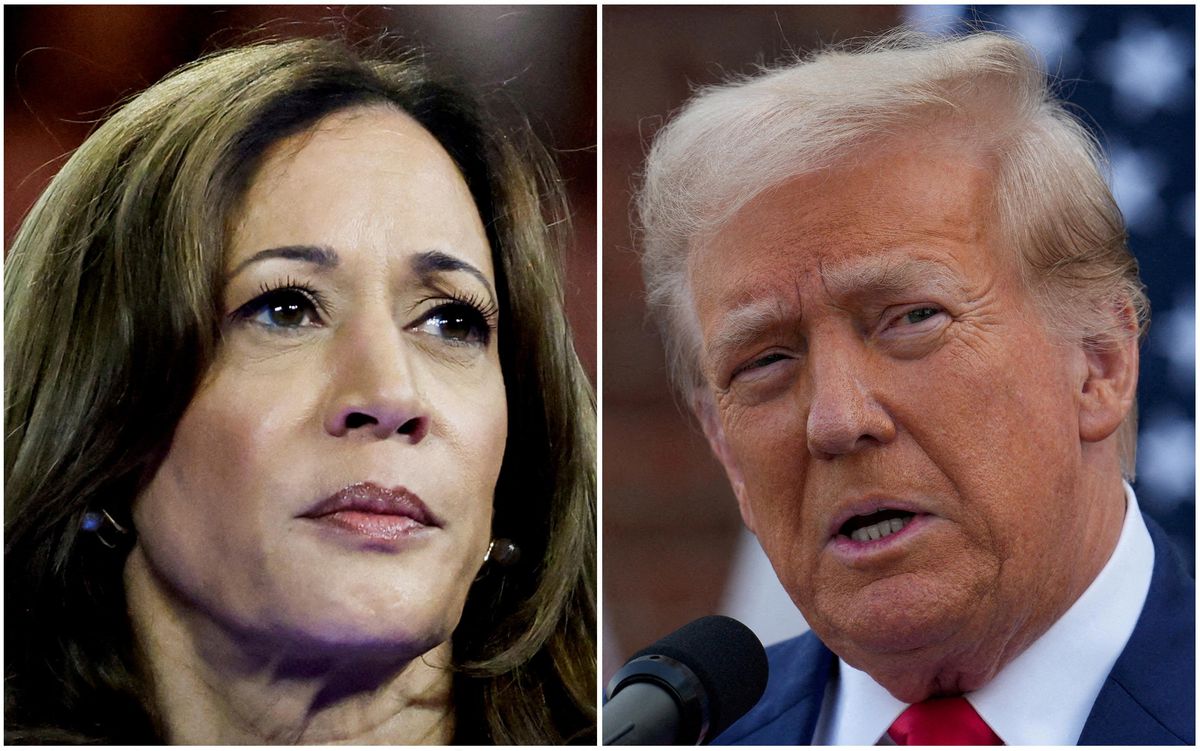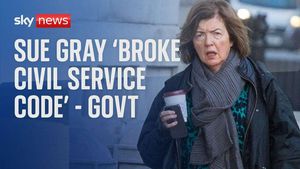The road to the U.S. Presidential election on November 5, 2024, is paved with uncertainty, and as candidates jockey for position, they're also creating ripples across financial markets. For investors, both the political stakes and potential economic changes are garnering attention. With significant geopolitical concerns highlighted by recent surveys, the relationship between upcoming elections and market performance is becoming increasingly relevant.
According to PGIM Investments, the asset management arm of Prudential Financial, many institutional investors are closely watching U.S. elections, citing them as top concerns for their portfolios. Interest is not just limited to the U.S. election as geopolitical risks loom large on the radar. This includes the potential ramifications of elections taking place across more than 70 countries this year. Amidst this atmosphere, about 56% of institutional investors indicated the significance of these elections on their investment decisions, viewing them through the lens of global stability.
What particularly stands out is the perspective of these investors, who remain aggressive with their long-term strategies. Despite fluctuatingshifts within the political climate, investors view these elections as short-term risks. Approximately 33% of the survey respondents express confidence, planning to adopt more aggressive portfolio strategies as we move toward the end of 2025.
James Sonne, head of government affairs at PGIM, shared his insight: “It's still kind of uncertain about what a Harris administration will look like. But I think regardless, we don’t expect many surprises,” hinting at the general sentiment of preparedness flowing through investor strategies. The key is staying flexible and ready to seize opportunities as they arise from changing market dynamics.
The expectation is clear; even with caution swirling around future elections, there's notable readiness among institutional investors to weather political shifts—and this could significantly impact market dynamics. They project a strong disposition toward maintaining diversified portfolios, positioning themselves to capitalize on unforeseen opportunities stemming from geopolitical unrest, not letting temporary apprehensions deter their strategies.
Investors also appear to be adjusting their cash positions heading toward the elections. With the uncertainties of geopolitical climates leading some to take money off the table, around 41% of U.S. investors have moved to cash based on the apprehensions tied to global instabilities, signaling a cautious yet proactive approach.
Next, let’s look at the potential impact the election results may have on specific sectors, particularly concerning trade policy. Deglobalisation has become synonymous with contemporary discussions surrounding trade. Regardless of who takes up residency, trade policy is predicted to be influenced by the candidates’ differing approaches. A Trump presidency may lean toward aggressive trade measures, pushing for tariffs—similar to those imposed during his initial term. Conversely, if Kamala Harris emerges victorious, her proposed multilateral trade relations could steer the U.S. toward collaborative strategies against global competitors like China.
The potential outcomes could either tighten or ease market access for U.S. companies depending on the course chosen by the next administration. Investors must keep close tabs on companies' connections to overseas supply chains and strategically align their portfolios for possible price adjustments as trade policies evolve.
While gold and precious metals often step up as safe havens, the historical performance of these assets relative to political change is also under scrutiny. Indeed, gold has exhibited resilience under the administrations of both major parties. A historical analysis shows it tended to perform slightly more favorably when Democrats had their hands on the reins. According to Matt Weller of Forex.com, since the 1970s, gold prices have averaged gains of about 1.5% during Democratic presidencies, whereas losses of approximately 5.5% have been noted under Republican leadership.
Investors need to analyze these patterns as they adjust their expectations leading up to and following this pivotal election. Although the performance charts and trends do offer some insight, the market’s response is invariably influenced by broader fiscal policy, global currents, and even potential surprises tied to real-time global events.
The complexity of relationships between presidencies and economic performance stresses the importance of investing with caution. Market analysts are aware of multiple influences outside of the elections, including inflation rates and overall economic growth, which weigh just as heavily, if not more, on investment decisions.
At the center of investors’ minds is also the question of risk management. The idea is to have well-diversified portfolios to mitigate potential losses amid political turmoil. A balanced approach incorporating various asset classes, maintaining appropriate liquidity, and readiness to adapt to changing situations contributed to part of the investor strategy. This perspective aligns with insights from Guido Felices, who emphasized having both strategic and dynamic asset allocation processes as pivotal tools for managing market exposure.”
Institutions are encouraged to employ adaptive models where they can stress-test their portfolios through various hypothetical scenarios allowing for responsive adjustments as needed. Relying on quantitative models, buffered ETFs, and including allocations to tangible assets can pave the path for safety nets against sudden shifts.
Looking at this election year brings significant responsibility for investors and market watchers, especially with rising geopolitical tensions flowing from issues internationally and regionally affecting the market sentiment. Although investor sentiment typically revolves around adjusting reactionary measures to political climates, the goal remains to plan strategically with thorough likelihood analyses.
Heading closer to the election date, the unknowns will only grow; preparing well-structured contingency plans becomes imperative. With institutional investors bracing for potential outcomes, the overarching focus on diversified investment strategies and agile portfolio management will carry the day, no matter how the ballots fall this November. Adaptation, adjustment, and preparedness will likely dictate success through whatever political winds may blow.




